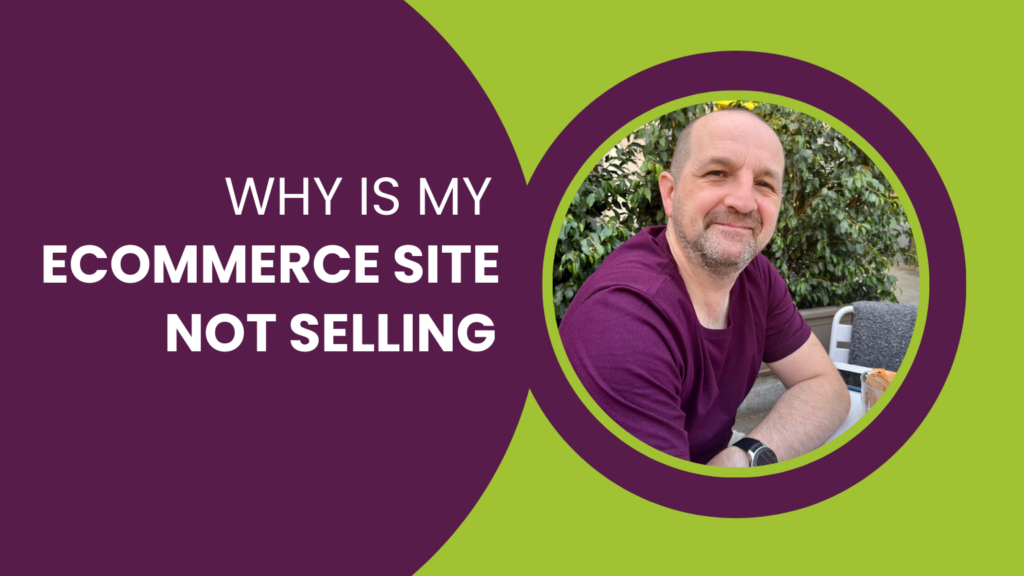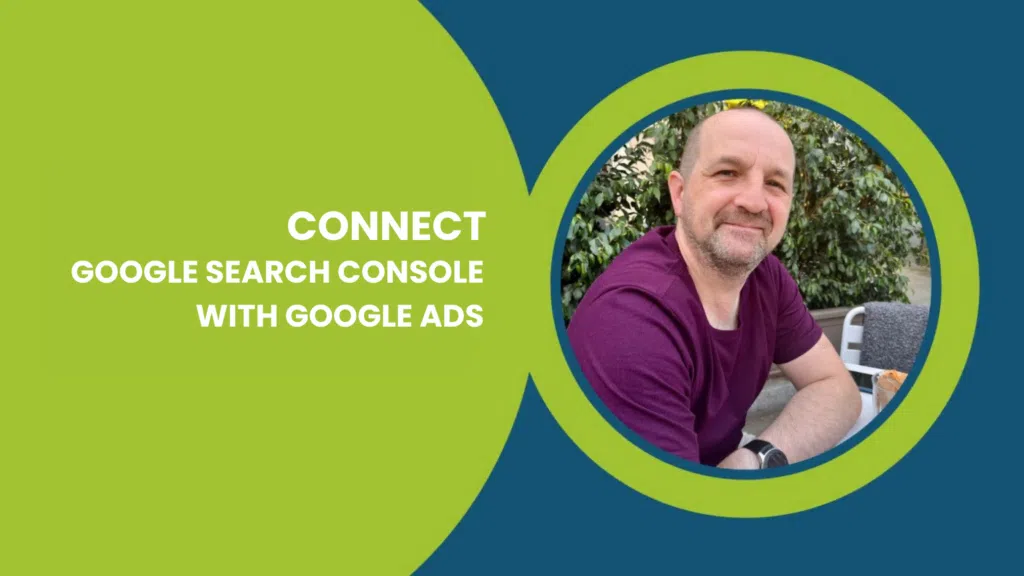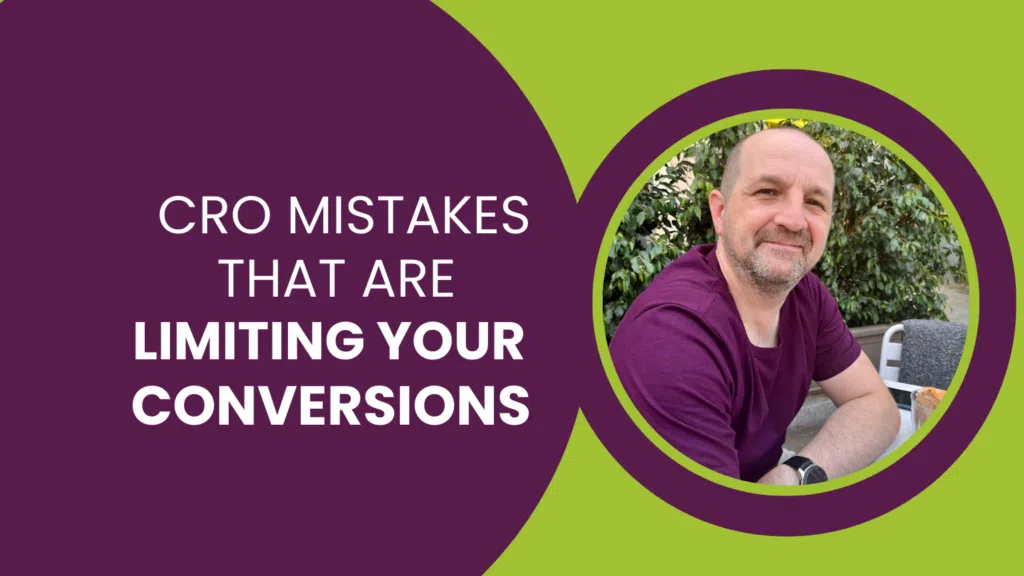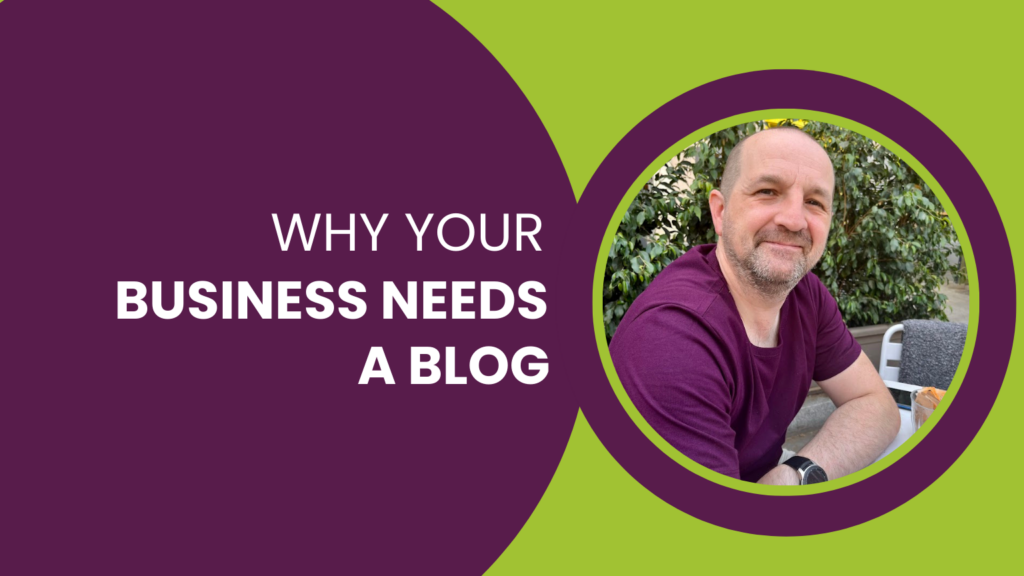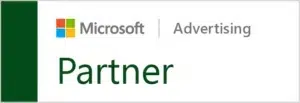Working with a huge number of eCommerce stores over the last 10 years, we’ve seen an evolution in the way customers are influenced and buy online and the eCommerce buying experience itself.
One thing hasn’t changed for some eCommerce store owners though – they’re still not making enough sales.
There are two very distinct problems with eCommerce sales – (almost) no sales is one painful problem, making sales but not enough to make a profit is entirely another problem.
This post focuses on the first, more complicated issue; why is my eCommerce store making no sales?
As with any business, the eCommerce sales process has many elements; every one of which has the capacity to fail and break the sales process and your profit along with it.
For the purposes of this post, we’re assuming that there are very few or no sales, rather than the eCommerce sales slump being a temporary issue.
To increase sales on eCommerce, let’s start at the beginning.
Why do e-commerce sales matter?
E-commerce sales are crucial for their global reach, offering businesses a cost-effective and convenient way to connect with consumers 24/7. The online platform allows for diverse product offerings, data-driven decision-making, and direct customer engagement, fostering scalability and adaptability to consumer trends. E-commerce not only expands market reach but also streamlines transactions, contributing to increased sales and customer satisfaction. Its significance lies in providing businesses with a dynamic and accessible marketplace, breaking down geographical barriers and adapting to evolving consumer preferences.
Common Mistakes That Affect eCommerce Sales
Running a successful eCommerce venture requires careful consideration of various factors that contribute to both traffic and conversion. Unfortunately, certain common mistakes can significantly impact eCommerce sales. By identifying and rectifying these pitfalls, you can pave the way for a more successful online business.
1. Insufficient Traffic Generation:
One prevalent mistake is not adequately addressing the traffic aspect. If your eCommerce site is not receiving the right visitors, the chances of making sales diminish. Focus on acquiring buyer intent traffic through strategies like SEO, PPC, Influencer Marketing, Affiliate Programs, and Email Marketing.
2. Neglecting Design Elements:
Design plays a crucial role in building trust and encouraging conversions. If your website lacks key design elements, potential buyers may hesitate to make a purchase. Ensure your site is visually appealing, easy to navigate, and instills confidence in visitors.
3. Overlooking Buyer Intent:
Understanding the intent of your audience is paramount. If your eCommerce site attracts visitors without a genuine interest in your products, it may lead to increased bounce rates and minimal sales. Optimise your pages for buyer-intent keywords to align with the needs and desires of potential customers.
5. Inadequate Checkout Optimisation:
The checkout process is a critical touchpoint where many sales can be lost. Distractions, lack of trust signals, and a cumbersome checkout experience can deter customers from completing their purchases. Optimise your checkout page by eliminating distractions, showcasing trust badges, and providing clear instructions.
6. Limited Marketing Strategies:
Relying on a single marketing channel can limit your reach. Expand your marketing strategies to include a mix of channels such as social media, email campaigns, and influencer collaborations. Diversifying your approach increases the likelihood of reaching a broader audience.
7. Failure to Leverage Customer Testimonials:
Customer testimonials serve as powerful social proof. If your eCommerce site lacks reviews and testimonials, potential buyers may question the credibility of your products or services. Encourage satisfied customers to leave reviews and prominently display them on your site.
8. Ignoring Mobile Responsiveness:
With the prevalence of mobile users, neglecting mobile responsiveness is a significant oversight. If your eCommerce site is not optimised for mobile devices, you may lose a substantial portion of potential customers. Ensure a seamless and user-friendly experience across various devices.
9. Ineffective Call-to-Action (CTA):
A compelling CTA is crucial for guiding visitors through the conversion process. If your CTAs are vague or uninspiring, visitors may not take the desired actions. Craft clear and persuasive CTAs that prompt users to make a purchase, subscribe, or engage with your site.
By addressing these common mistakes, you can enhance the overall performance of your eCommerce site and create a more conducive environment for increased sales and customer satisfaction. Regularly assess and refine your strategies to stay ahead in the competitive eCommerce landscape.
Why is my website getting traffic but no sales?
The influx of traffic to your website is robust, but the issue may be rooted in the purchasing intent of these visitors. Take a closer look at the type of traffic you’re attracting. If the visitors aren’t genuinely interested in your products, optimising conversion rates alone may not lead to increased sales. For instance, consider a scenario where your website caters to high-end tech gadgets, and the incoming traffic consists mainly of users seeking budget-friendly options. In this case, aligning your offerings with the interests of your target audience becomes essential for driving conversions.
How To Increase Sales On eCommerce:
eCommerce Traffic
Let’s assume that no traffic is an obvious problem that you’ve already addressed. You’re getting traffic to your eCommerce store, but it’s just not converting into sales at all.
Traffic Intent
The first issue which affects eCommerce sales is the intent of the user visiting the site.
Returning customers who already know your brand will almost always deliver the highest conversion rate. If you’re in startup mode or have very few customers, you’re unlikely to be enjoying this traffic or the sales which come with it.
Search Traffic
eCommerce traffic from Search Engines such as Google and Bing should convert well in comparison to other types of traffic, but still – intent is absolutely critical.
Whether the traffic comes from Bing Ads, Google Shopping ads or Google organic search, the intent behind the search query will determine part of the conversion rate and therefore the ROAS (Return on Ad Spend, conversion value over cost).
‘Toys’ doesn’t convert into sales as well as: ‘toys for 6 year old boys’, which doesn’t convert as well as: ‘dinosaur toys for 6 year old boys’, which doesn’t convert as well as: ‘diplodocus toy set’.
Scoring out of 100%, we can apply each of those searches an expected conversion rate for ALL sites: ‘toys’ at 5% through to ‘diplodocus toy set’ at 80%. We can expect the more specific query to convert into a sale somewhere as it’s very specific – this customer knows what they want and they’re ready to buy.
Consider these searches in terms of “shopping” queries or “buying” queries. Shopping is more about research for the customer – they’re not quite sure what they want to buy as they’re not sure what’s available, nor the price tag. Buying queries represent customers who have finished shopping, know what they want and they’re ready to commit to the purchase.
Rankings
Whether traffic comes from Google Shopping, organic or search ads, there’s a ranking. When your site is lower down the pecking order, customers have already visited several sites before yours. They’ll already have an idea of what they’re buying and what they’re spending. Hell, it’s quite likely that they already decided and they’re just visiting your site to validate the decision.
When the click to your site is the fourth or fifth, the conversion rate will almost always be lower, even though the clicks might be cheaper. On balance, cheaper clicks don’t always mean a lower cost per conversion, nor more critically a higher ROAS.
Impression Share
We’ve posted about and recorded videos about impression share before. It’s a critical element in the Sales Funnel for many online purchases and one which can torpedo your ROAS.
See: ‘Understanding AdWords Impression Share.’
In short – higher value purchases need multiple clicks over a period of days. When your site can not be found every time, that search funnel breaks and you lose sales, along with ROAS.
Social Traffic
Social media is awesome. We love it. The world has gone crazy over it and we’re all spending a heap of time every day in our Facebook news feeds and Twitter streams.
Facebook Ads are a fantastic, cheap way of targeting the perfect audience for your products, as well as opportunities on Twitter and Pinterest, among others.
But, let’s consider the intent to calculate an expected conversion rate. Users landing on your site from Facebook Ads are NOT looking to buy right now. This might be a mother whose 6-year-old son loves dinosaurs, but she’s not searching for it right now.
There are re-marketing opportunities on Facebook to support other strategies, but interrupting new customers and even tightly targeted, very specific audiences doesn’t always produce a great conversion rate.
Also see: ‘Why Your Facebook Ads Aren’t Converting’.
Applying the same expected conversion rates as before:
Existing customers – 30%; specific and relevant audiences – 5%; generic audiences – 1%.
Social Traffic may be free or very cheap, but expect conversion rates to be much lower than higher intent, Search Traffic.
Social can help though. It is great for creating awareness and demand which in turn creates search traffic. Join those two up and you’ve a recipe for much greater success.Learn AdWords with a Pro
User Experience
So, we’ve got traffic. Some of it is high intent, very specific and some is more Shopping and browsing traffic or from Social Media. The high intent traffic should be converting into sales, at least some, but it isn’t.
It’s important to optimise the user experience through your eCommerce store, through a process we call: ‘Conversion Rate Optimisation.’
There are other, more detailed posts on optimising the user journey, but here are some of the critical areas which could be costing you sales:
Site Speed [link] has a direct relationship on conversion rates. Studies show that on mobile devices, every second of additional load time reduces the conversion rate by 5%. In extreme cases, a really slow site could mean no sales, but is more likely to be an incremental issue – your conversion rate is more likely to be low rather than zero.
Test your eCommerce store’s speed and address anything which is slowing it down to improve conversion rates.
Design, Brand and Layout
More likely to be an incremental issue than a critical one, but the look and feel of your eCommerce store, the design, the colours, the text formatting and the images do have an impact on conversion rate.The layout, navigation and search functions on your eCommerce store are often barriers to purchase too. Again, it’s more likely that these issues create a low conversion rate rather than no conversions.
Product Data
A great user experience with fast loading, great branding and detailed product data and beautiful images would be considered 100%, scaling down to slow sites with poor content at 10% or even lower.
Price, Availability, Delivery and Returns
Now, we’re getting to the business end. These four points are amongst the most critical of all.
With high intent, perfect traffic from Search, returning customers who already trust your brand and a lightning fast website with perfect product images and data, any one of these could sink your conversion rate and ROAS.
Price (for eCommerce stores) is almost always the difference between making a ton of sales, making some sales or making no eCommerce sales at all.
Check competitors’ prices for the same products. Check for similar or alternative products and do it regularly to make sure you’re competitive (and also to make sure you’re not missing out on a little more margin!) Availability and delivery time can sink your eCommerce sales. Your customer is ready to buy and likes the price. But wait, it’s not in stock – you just lost the sale.
Lengthy delivery times will also deter customers from completing a purchase. The impact of this will vary from product to product – birthday gifts need to be more timely than a new ornament or plant bulbs, for example. But once they decide to buy, most customers won’t want to wait weeks for delivery, even if it is free.
Delivery Charges
The number one reason for cart abandonment; surprise delivery charges.
If you have the purchase funnel defined in Google Analytics, you’ll be able to see customers abandoning purchases at the Shipping page – a clear indication that delivery charges or times are costing you sales.
Higher prices, slow delivery and higher delivery charges – 10%.
Payments
Lastly, and perhaps obviously, is your Payment Gateway working? It rare that this gets overlooked, but not impossible. Make some test purchases on different devices to check.
You’re Still Not Getting Sales…
If traffic is high intent, your site loads fast, looks great and you have awesome product images and descriptions, there are no surprise delivery charges and your checkout process works every time, there’s one issue remaining.
Products and Price+
If your products just aren’t what customers want to buy, your eCommerce store just won’t make sales.
This goes back to traffic intent, particularly around search queries mentioned earlier in this post.
“Commodity” queries for cables, home furnishings, food items and clothing amongst others are pretty poor territory for eCommerce stores selling high end products.
Your eCommerce store might sell beautiful and contemporary bathroom lighting, but that doesn’t mean that you can sell a £159 light fitting to someone searching for: ‘chrome four LED bathroom light’.
The query is very specific and high intent. The customer knows what they want and they’re ready to buy. Your site loads fast, looks beautiful, the product is in stock and you have free, next day delivery.
Compared with other sites selling exactly the same product, you’re competitive too. But you’re still not making sales. Why?
The products just won’t sell. These searches are “commodity searches”. The majority of users will make a purchase from these queries, but are likely to spend £25 – £60, rather than £159.
The Impact of Product Selection on Conversion Rates:
Only commodity products – 85%.
2. Focus on brand traffic to attract customers searching for the brands you do sell and quit the commodity traffic which doesn’t convert.There is an issue with the second option worth mentioning; there needs to be enough demand for those brands to make it worthwhile and to make you enough sales. If there isn’t enough demand, it’s really time to evaluate the brands you sell on your eCommerce store.
- Low intent search traffic – 5%.
- Average load times with a reasonable user experience – 50%.
- Average prices and high delivery charges – 30%.
- 5% x 50% x 30% = 0.75%. That’s not pretty if clicks cost £0.50. The cost per conversion would be £133.33.
- High intent search traffic – 20%.
- Fast load times, great design and product images and information – 75%.
- Competitive prices and free next day delivery – 75%.
- 20% x 75% x 75% = 11.25%. A world away at £8.88 per conversion, not to mention 15x sales for the same budget.
If you’re to make a profit and increase sales on eCommerce, you MUST optimise every step of the funnel and have the right pricing and products – it’s not just about traffic.

